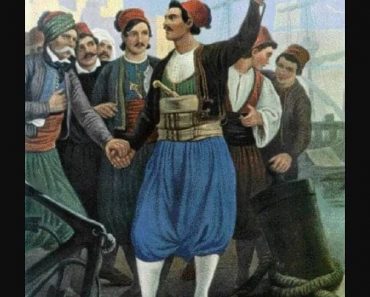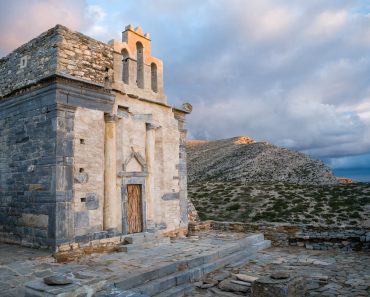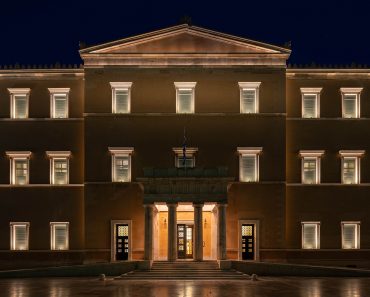SM Group blends sustainable cultural preservation in restoring WVSU’s Quezon Hall

The SM Group’s Henry Sy Foundation recently completed the restoration of West Visayas State University’s (WVSU) Quezon Hall, an architectural masterpiece that holds a notable place in the history of the university and the broader Iloilo community.
Alongside the restoration, the collaborative effort incorporated modern and sustainable features suited to the needs of students and faculty.

A historic landmark

Situated at the heart of the WVSU campus and on its highest elevation, Quezon Hall serves as the university’s centerpiece. Built between 1919 and 1926, it features a Greek-inspired Ionic architectural style typical of the American colonial period, characterized by elegant columns and distinctive scrolled capitals.
“It is the building with the most prominent structural design on the campus and one of the iconic architectures for campuses in Iloilo City, showing off Greek-inspired architecture,” began Dr. Joselito Villaruz, WVSU President.

“The coffee table book ‘Thy Name Resounds: West Visayas State University Since 1902’ explains that the Quezon Hall architecture follows the Ionic style, one of the two main orders of Greek architecture. Some of these elements include capital, shaft or column, and base. The hall’s Ionic capitals, highlighted by scrolling volutes, are simpler than the standard ones. Under the volutes, the tall and slender Ionic columns are usually fluted, but in Quezon Hall, it is not, thus making the overall design seemingly effortless,” Dr. Villaruz continued.
Aside from its architectural significance, it represents an important milestone in Filipino educational heritage and national identity through its protection under the 2009 National Heritage Act.
“WVSU must preserve it for future generations as a commitment to the Filipino people. As an immovable cultural property, WVSU is a steward to maintain the identity and distinctive character and its significant contribution in molding the minds of Filipinos and bridging dreams to reality,” Julius Undar, WVSU Chief Administrative Officer, shared the need for its restoration.

A heritage building gets new life

The restoration project preserved Quezon Hall’s original architectural character, maintained its shape and exterior without introducing any alterations, and ensured the preservation of its historical integrity. This adheres to the guidelines of the National Historical Commission of the Philippines.
The rehabilitation maintained Quezon Hall’s original character. It kept the building’s U-shape, neoclassical form, and exterior appearance. Key features, such as the prominent entryway with its colonnades and arches, staircases, and steeply pitched roofs with decorative eaves were also carefully preserved.
Restoration work included repainting and replacing the deteriorated roof and its panels with termite-resistant materials. Distinctive elements of the building’s visual identity, such as moldings, carvings, and wrought ironwork, were also meticulously repaired and repainted. Damaged Capiz shells were replaced with simulated versions to maintain the building’s authentic visuals. Decorative trims on the eaves were also painstakingly reconstructed.
Sustainability meets preservation


Arch. Gerard Ibañez, OIC Head of the WVSU Campus Physical Planning Office, said the project prioritized the use of suppliers from the country, especially local suppliers in Iloilo, for items such as tongue-and-groove flooring.
The rehabilitation of existing materials, including wooden flooring, balusters, and decorative posts, utilized locally available materials, ensuring sustainability and supporting local industries.
Incorporating modern sustainability practices into the restoration was a critical aspect of the project. Energy-efficient lighting and inverter-type air conditioning units were installed to reduce energy consumption.
Plumbing and sanitary systems were modernized to prevent leaks and conserve water. Windows on both the left and right wings were replaced to enhance natural lighting and ventilation. Interior walls were painted with light-reflective finishes to approximate the original design while improving energy efficiency.
“It is impossible to do rehabilitation or restoration without sustainability in mind,” Julius Undar, WVSU Chief Administrative Officer, shared. “Historical preservation and sustainability are partners. Preservation of historic buildings conserves energy and resources. Energy is lost when buildings are demolished; energy is used to cut down trees or in carpentry and demolition. In the hall, restoration is done, repair is undertaken, and the structure is maintained in its original state for the environment,”
Both Undar and Ibañez noted that by prioritizing the retention of original materials and integrating modern, energy-efficient systems, the project minimized the environmental impact associated with demolition and reconstruction while ensuring the building’s continued use and its contribution to the university’s cultural identity.
“WVSU is very much aware of the importance of preserving cultural heritage considering that QH is one of the most iconic campus architectures in Iloilo City, and so, it partnered with the two foundations of the SM Group. It also reminds the WVSU community of the tradition of excellence that the Quezon Hall embodies,” Villaruz capped.
The WVSU community anticipates that the restored Quezon Hall will serve as an effective learning environment for students and a conducive space for faculty to deliver quality education. This initiative reflects the Henry Sy Foundation’s enduring commitment to empowering the youth and shaping brighter future.







